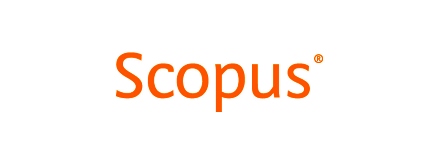Klasifikasi Atribut Pelayanan Mobile Banking dengan Kano Model Berdasarkan Dimensi E-Servqual
DOI:
https://doi.org/10.30656/jsmi.v2i2.696Keywords:
E-Servqual, Kano Model, Mobile Banking, Service QualityAbstract
This study aims to determine the classification of mobile banking services that improve customer satisfaction based on the dimensions of E-Servqual using the Kano Model method. The classification is needed so that the banks were able to make improvements and innovations in the performance of the quality of their mobile banking services. From the results of data processing using Kano, it is known that the service attributes that need to be improved are the m-banking facility, which features a cash withdrawal service via ATM. This will have a major impact on customer satisfaction because these attributes have the highest satisfaction coefficient value of 0.67 in one-dimensional classification. Furthermore, service attributes that need to be improved and innovated are m-banking has a fast application reactivation service with a satisfaction coefficient of 0.61 in the attractive classificationDownloads
References
C. Lingfen, D. Woods, K. Curran, and J. Doherty, “Mobile development environments for electronic finance,†Int. J. Electron. Financ., vol. 4, no. 2, pp. 99–119, 2010.
MEF, “Country Report : Indonesia Part Of The Mef Global Consumer Survey Series,†Center for a New American Security Washington, DC, 2015.
Tempo, “Pengguna Mobile Banking di Indonesia Masih Rendah,†Bisnis Tempo, 2016.
M. M. Ulkhaq and M. P. B. Barus, “Analisis Kepuasan Pelanggan dengan Menggunakan SERVQUAL: Studi Kasus Layanan IndiHome PT. Telekomunikasi Indonesia, Tbk, Regional 1 Sumatera,†J. Sist. dan Manaj. Ind., vol. 1, no. 2, pp. 61–67, 2017.
A. Wardhana, “Pengaruh Kualitas Layanan Mobile Banking (M-Banking) Terhadap Kepuasan Nasabah di Indonesia [Effect of Mobile Banking (M-Banking) Service Quality on Customer Satisfaction in Indonesia],†DeReMa (Development Res. Manag. J. Manaj., vol. 10, no. 2, pp. 273–284, 2015.
C. Lovelock and E. Gummesson, “Whither services marketing? In search of a new paradigm and fresh perspectives,†J. Serv. Res., vol. 7, no. 1, pp. 20–41, 2004.
A. Febrianta and I. Indrawati, “Pengaruh Kualitas Layanan Mobile Banking Terhadap Kepuasan Nasabah Bank Bca Di Kota Bandung,†eProceedings Manag., vol. 3, no. 3, 2016.
A. Parasuraman, V. A. Zeithaml, and A. Malhotra, “ES-QUAL: A multiple-item scale for assessing electronic service quality,†J. Serv. Res., vol. 7, no. 3, pp. 213–233, 2005.
S. Firdous and R. Farooqi, “Impact of Internet Banking Service Quality on Customer Satisfaction,†J. Internet Bank. Commer., vol. 22, no. 1, pp. 1–17, 2017.
M. R. R. F and Y. Rohayati, “Analisis Kebutuhan Layanan Media Komunikasi Facebook Amanda Brownies Dengan Metode E-Service Quality dan Model Kano,†Telkom University, 2014.
N. Kano, “Attractive quality and must-be quality,†Hinshitsu (Quality, J. Japanese Soc. Qual. Control., vol. 14, pp. 39–48, 1984.
A. A. Aliyu, S. M. Lame, and M. Gafar, “Application of Kano ’ s Model Approach in Mobile Banking and Customer Service,†J. Appl. Sci. Res., vol. 9, no. 8, pp. 4527–4534, 2013.
I. Safi’i and F. Handoko, “Kualitas Pelayanan Di Tinjau Dari Prestasi Akademik Mahasiswa Studi Kasus Pada Universitas Kadiri,†J. Teknol. Dan Manaj. Ind., vol. 1, no. 2, pp. 22–27, 2017.
P. S. Levy and S. Lemeshow, Sampling of populations: methods and applications. John Wiley & Sons, 2013.
D. Walden, “Kano Introduction,†Cent. Qual. Manag. J., vol. 2, no. 4, pp. 3–7, 1993.
C. Berger, “Kano’s methods for understanding customer-defined quality,†Cent. Qual. Manag. J., vol. 2, no. 4, pp. 3–36, 1993.
Downloads
Published
Issue
Section
License
All articles in Jurnal Sistem dan Manajemen Industri can be disseminated provided they include the identity of the article and the source of the article Jurnal Sistem dan Manajemen Industri. The publisher is not responsible for the contents of the article. The content of the article is the sole responsibility of the author
Jurnal Sistem dan Manajemen Industri is licensed under a Creative Commons Attribution-NonCommercial-ShareAlike 4.0 International License.
















1.png)
.png)
.png)
.png)


